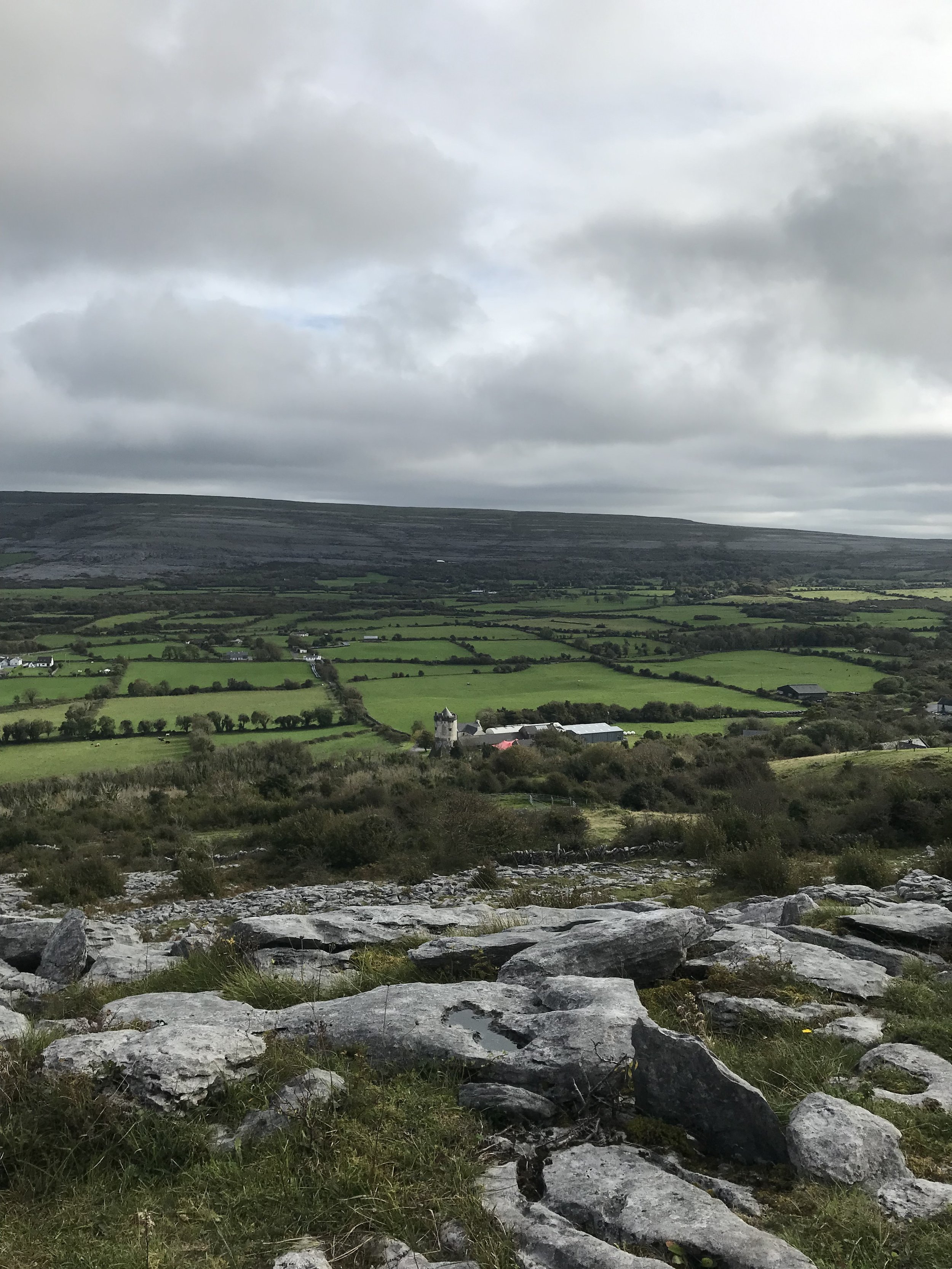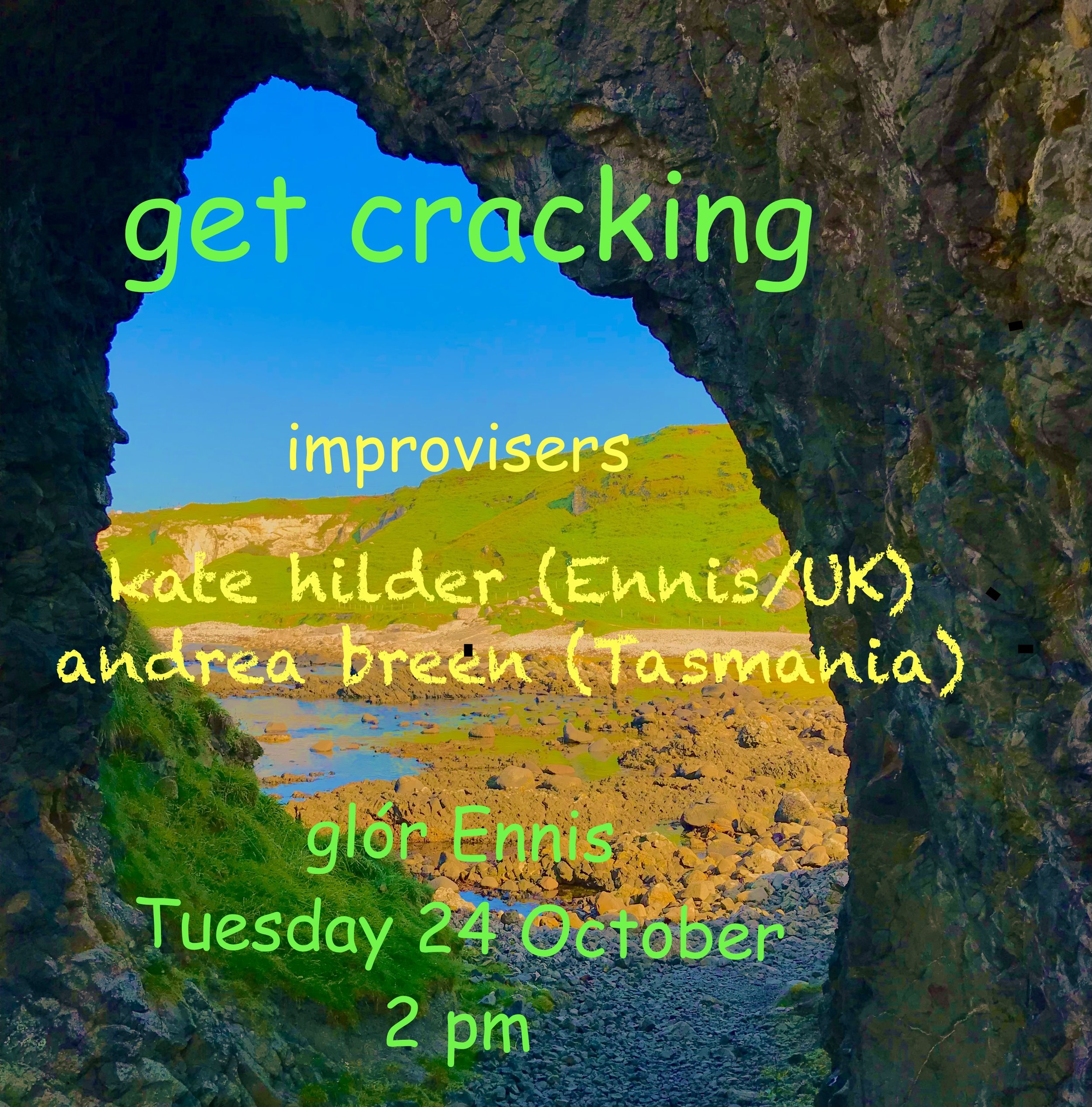Burren College of Art, Newtown Castle, Ballyvaughan Co Clare, Ireland.
I’m in Ireland but my heart is not quite here. Each time I come to this blog I experience interception and I stop writing. Attending to creativity – to what might be art – feels as if it’s being shred, as if I’m becoming too steeped in dismay. Each day the news from Gaza shatters my equilibrium. Israeli actions in the Occupied Palestinian territories become more and more inhumane. Atrocities perpetrated against Israelis by Hamas, and the tragedy for hostages captured by Hamas, are reprehensible and depraved. But so much media and response has been ignoring the plight of what Palestinian people have endured (and survived) for decades, since – and including – the Nakba, the Catastrophe (1948). The Israeli occupation of Palestine and its imposed apartheid and violence is counter to all reason and compassion, and – as war crimes – sabotages international law. More than anything their actions are escalating to genocide – supported by the west.[1] Arab states too have neglected Palestinians. When will compassion speak?!
I have also been hyper-alert to the impending Referendum in Australia and cast my postal vote several weeks ago. Last Saturday the majority of Australians voted AGAINST establishing an Aboriginal and Torres Strait Islander Voice in the Constitution, after years of preparation and the Makarrata declaration (2017). But, over 4 million voted Yes. I hold to that, to staying open and welcoming to Indigenous voices; to listen to their continuing stories about, and responses to, the attempted genocide by settler-colonialists that was their history and continues as a legacy of survival.
First Nations response to the Referendum:
We are calling A Week of Silence from tonight (Saturday 14th October) to grieve this outcome and reflect on its meaning and significance. We will not be commenting further on the result at this time.
We will be lowering our Aboriginal and Torres Strait Islander flags to half-mast for the week of silence to acknowledge this result.
We ask others to do the same.[2]
Yesterday I drove to Ennistymon – a small town in the Burren – to the river Inagh and its falls tumbling behind the main street. I joined a Burrenbeo Trust education-walk led by otter expert Ruairí Ó Conchúir. We didn’t see any otter (due to their reclusive nature) but I now know more about their habitats and habits; and that deploying a ‘kick-net’ in the river is a testing method for water quality: insect larvae that salmonoids and eel feed on can guarantee otters then have a steady diet of fish. The chain of survival.
I’m reading Rebecca Solnit again – thanks to the BCA library – her ruminations on ‘lost’, when travelling, walking and attending to any sense of place.[3] Yesterday, when I was walking in the Burren, I felt as if the hedgerows were seething with potential: butterflies, insects, birds, seeds and flowers. Lost in place, in being? I try not to think too much about the dying ash trees here (due to Die-back), particularly the young trees that spring up along hedgerows and are so prevalent along the roads and on the lower slopes. They appear as if they are caught in winter bones.
I do think about motion, the dance of being present to movement, in its many iterations, as an improviser noticing the body travelling through time and space, generating actions through discovery. I keep returning to the question Is this art? Or, to use phenomenology-speak: I’ve bracketed-in that question into my research on ‘performance improvisation’ while at the residency. Does ART become art during or following intention? I’ve just discovered planchette, a writer’s implement – a heart-on-wheels-with-a-pen – that became synonymous with séances (in the 19th century) and automatic writing. It is perhaps an appropriate metaphor for improvisation: the Art of Spontaneity.
Feeling ‘lost’ while improvising could be my dragging hem: the vulnerability and cliff-top moments before wings unfurl. Finding form – in language, motion, or sound – might be expressing the evolution of art, the smudge of the stamp. Whatever it is, the process – intention – of spontaneity becomes a ‘finding’: gesture, word, melodic shape, noise, silence, stillness. It often feels like a deeper connection with my-self, ‘in the moment’ of what is.
I go on…to find…create…know…walk…dance…sing…
The spray of Irish rain. The not-quite-drizzle. I think of what Laurie Anderson says in Another Day in America:
And ah these days. AII these days! What are days for?
To wake us up. To put between the endless nights.
Dry days… to wake me up, to put between the (endless) damp ones. Many fields have become turloughs, lakes that appear after rain; they will disappear into the limestone ground during dry days, only to burgeon with the next downfall.
Since I wrote that last paragraph we’ve had a few warm, dry days, enough to confuse deciduous plants. Russet on-hold, except for a few previews. I spoke to an Irish woman yesterday who had taken the ferry to one of the Aran islands, to swim at her favourite beach. Talking with her I had the sense that she was squeezing all she could from the weather, as if it were gold. Today the blustery weather is summoning rain again, the Irish familiar. It punctuates time, and space.
Two Palestinians were to join us here for their residencies but they are trapped in Gaza. We grieve for them but can never imagine their shuddering, monstrous reality. And, the grief for so many in Australia after the referendum must be like a tidal wave. I will try to keep listening.
[1] Genocide: https://jewishcurrents.org/a-textbook-case-of-genocide
[2] https://ulurustatement.org/a-statement-from-indigenous-australians-who-supported-the-voice-referendum/
[3] Rebecca Solnit. A Field Guide to Getting Lost, 2006
Newtown Castle/The Burren College of Art
The Falls at Ennistymon
One more performance, in Ennis, with Kate Hilder!
Final performance invitation



